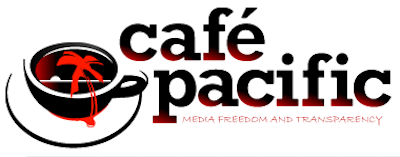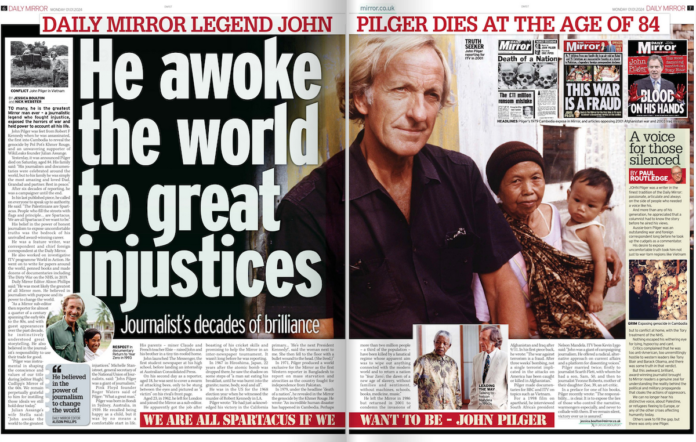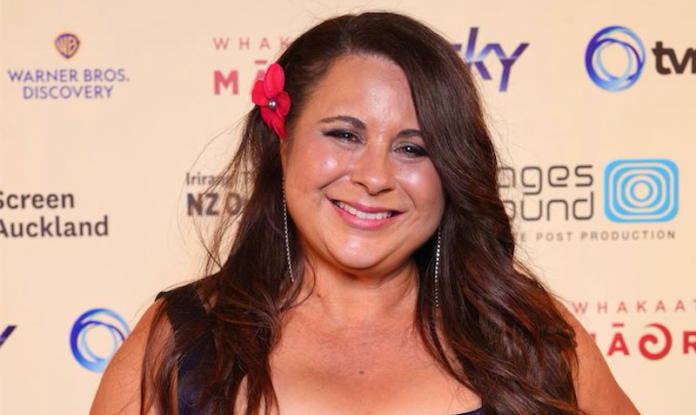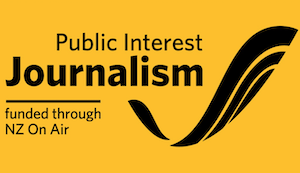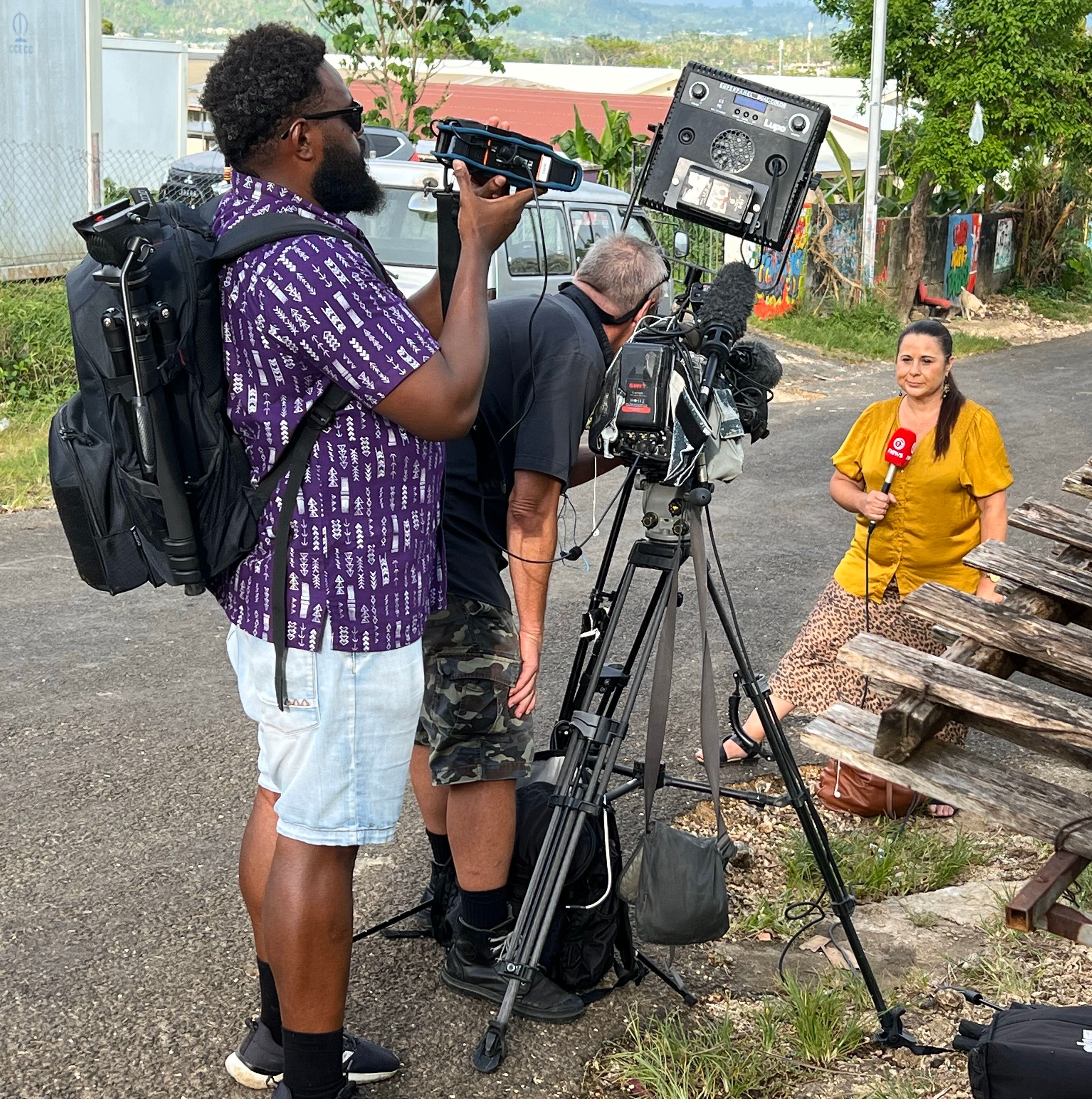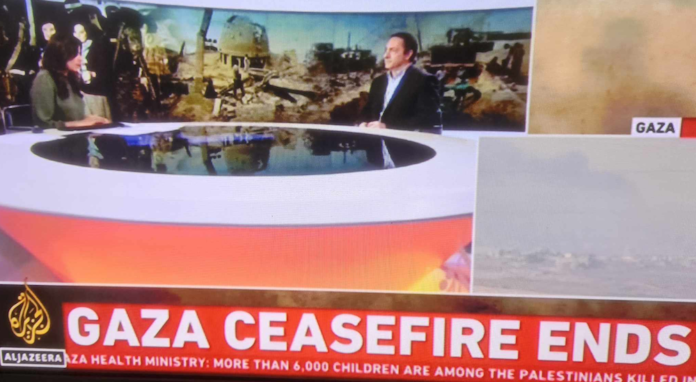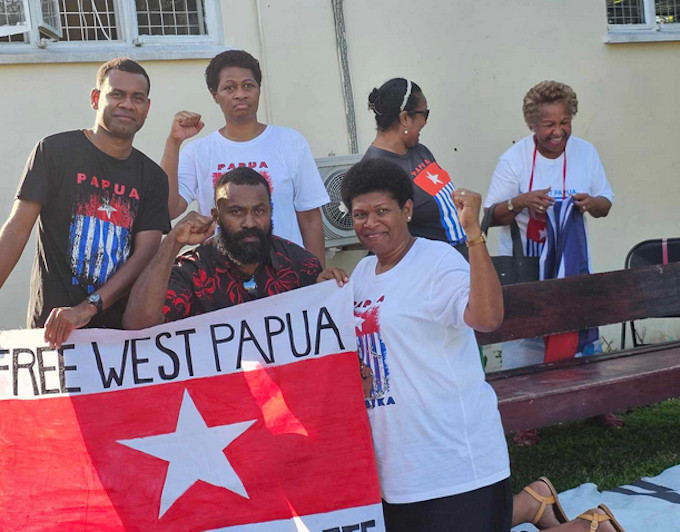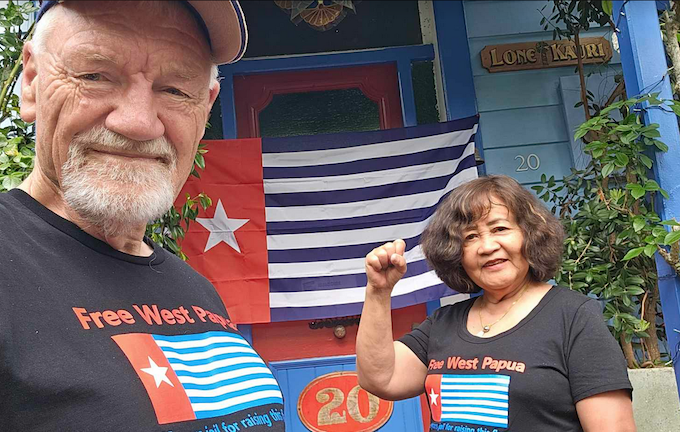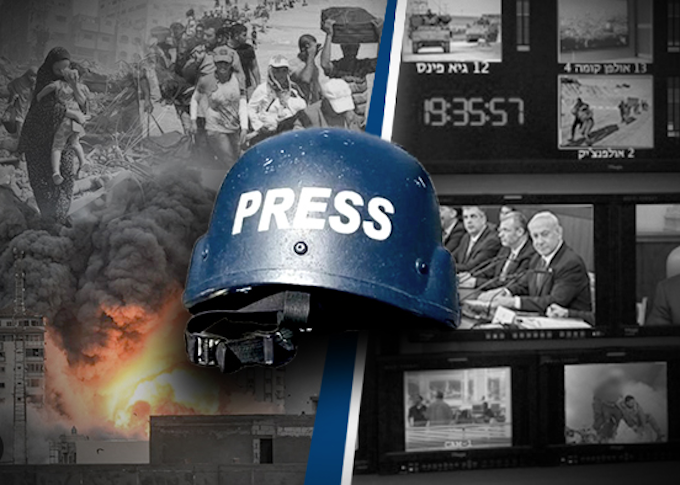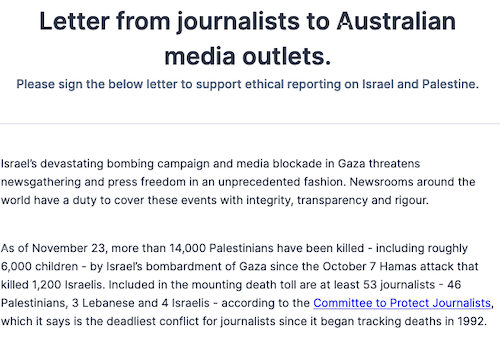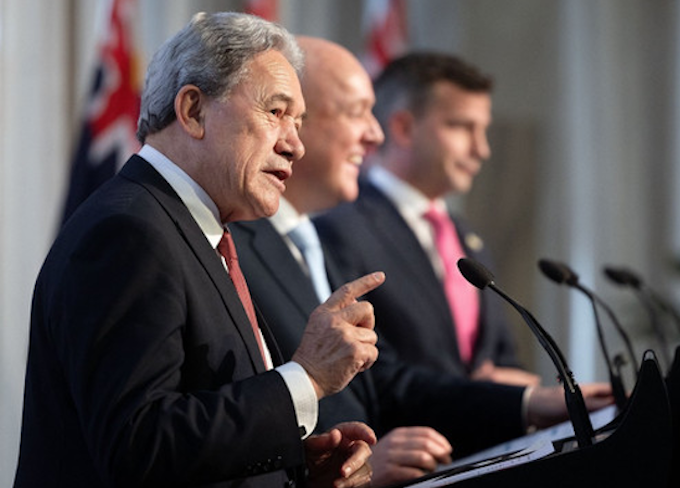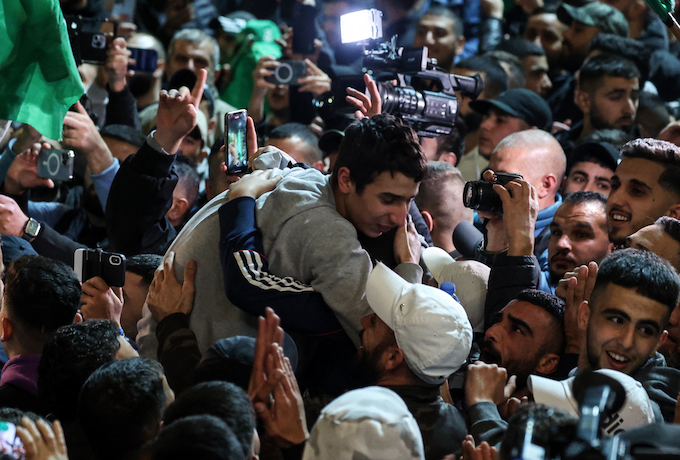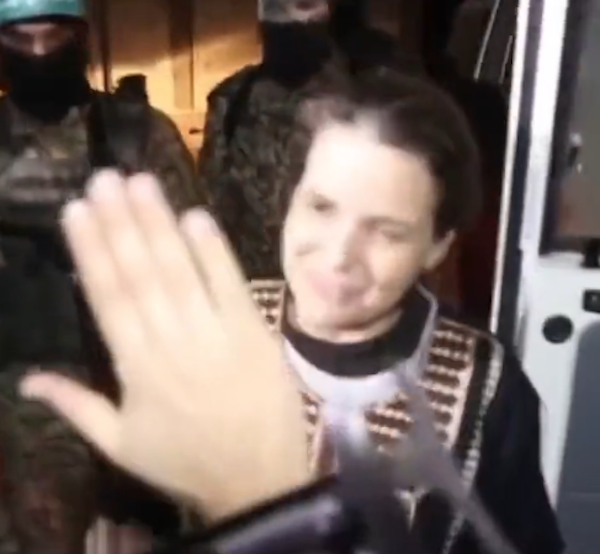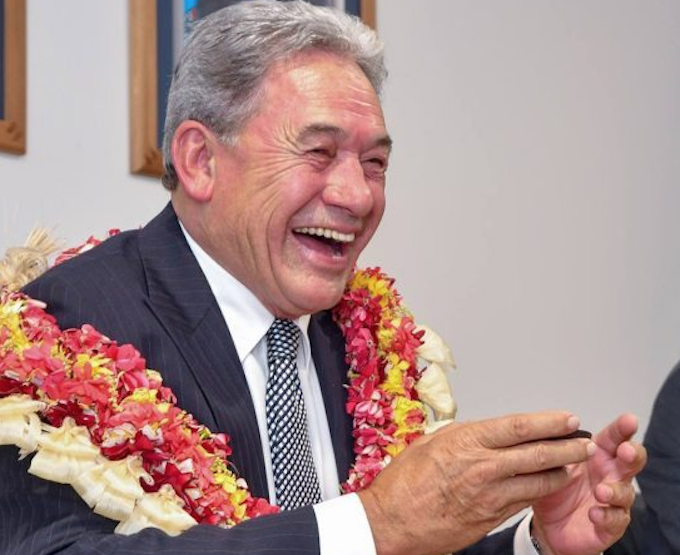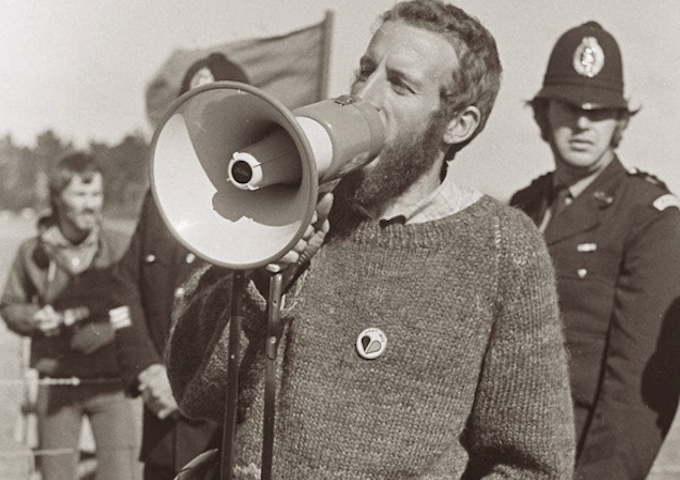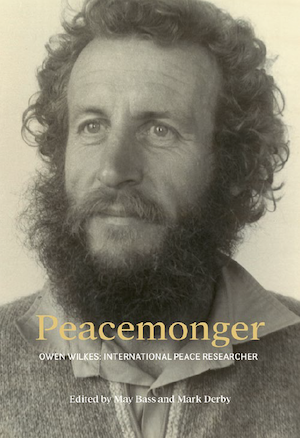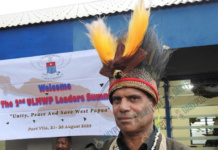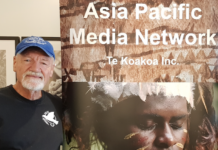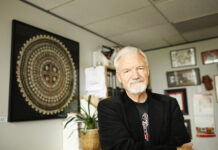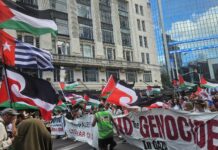OBITUARY: By Peter Boyle and Pip Hinman of Green Left
Sydney-born investigative journalist, author and filmmaker John Pilger died on December 31, 2023.
He should be remembered and honoured not just for his impressive body of work, but for being a brave — and at times near-lone — voice for truth against power.
In early 2002, the “war on terror”, launched by then United States President George W Bush in the wake of the 9/11 attack, was in full swing.
After two decades, more than 4 million would be killed in Iraq, Libya, Philippines, Pakistan, Somalia, Syria, Yemen and elsewhere under this bloody banner, and 10 times more displaced.
The propaganda campaign to justify this ferocious, US-led, global punitive expedition cowed many voices, not least in the settler colonial state of Australia.
But there was one prominent Australian voice that was not silenced — and it was John Pilger’s.
‘Breaking the silence’
On March 10 that year, Sydney Town Hall was packed out with people to hear John speak in a Green Left public meeting titled “Breaking the silence: war, propaganda and the new empire”.
Outside the Town Hall, about 100 more people, who could not squeeze in, stayed to show their solidarity.
John Pilger described the war on terror as “a war on world-wide popular resistance to an economic system that determines who will live well and who will be expendable”.
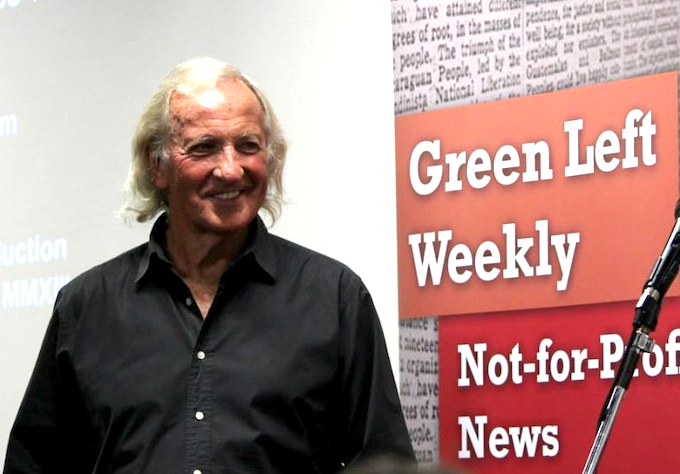
He called for “opposition to a so-called war on terrorism, that is really a war of terrorism”.
The meeting played an important role in helping build resistance in this country to the many US-led imperial wars that followed the US’ bloody retribution exacted on millions of Afghans who had never even heard of the 9/11 attacks, let alone bore any responsibility for them.
That 2002 Sydney Town Hall meeting cemented a strong bond between GL and John.
GL is proud to have been the Australian newspaper and media platform that has published the most articles by John Pilger over the years.
Shared values
For much of the last two decades, the so-called mainstream media were always reluctant to run his pieces because he refused to obediently follow the unspoken war-on-terror line.
He refused to go along with the argument that every military expedition that the US launched (and which Australia and other loyal allies promptly followed) to protect privilege and empire were in defence of “shared democratic values”.
The collaboration between GL and John was based on real shared values, which he summed up succinctly in his introduction to his 1992 book Distant Voices:
“I have tried to rescue from media oblivion uncomfortable facts which may serve as antidotes to the official truth; and in doing so, I hope to have given support to those ‘distant voices’ who understand how vital, yet fragile, is the link between the right of people to know and to be heard, and the exercise of liberty and political democracy …”
GL editors have had many exchanges with John over the years. At times, there were political differences. But each such exchange only built up a mutual respect, based on a shared commitment to truth and justice.
The last two decades of John’s moral leadership against Empire were inadvertently confirmed a few weeks before his passing when US President Joe Biden warned Israeli President Benjamin Netanyahu not to repeat the US’ mistakes after 9/11.
“There’s no reason we did so many of the things we did,” Biden told Netanyahu.
Focus on Palestine struggle
John had long focused on Palestine’s struggle for self-determination from the Israeli colonial settler state. He condemned Israel’s most recent genocidal campaign of Gaza and, on X, praised those marching for “peaceful decency”.
He urged people to (re)watch his 2002 documentary film Palestine is Still The Issue, in which he returned to film in Gaza and the West Bank, after having first done so in 1977.
John was outspoken about Australia’s treatment of its First Peoples; he didn’t agree with Labor’s Voice to Parliament plan, saying it offered “no real democracy, no sovereignty, no treaty between equals”.
He criticised Labor’s embrace of AUKUS, saying it was about a new war with China, a campaign he took up in his documentary The Coming War on China. While recognising China’s abuse of human and democratic rights, he said the US views China’s embrace of capitalist growth as the key threat.
John campaigned hard for WikiLeaks publisher Julian Assange’s release; he visited him several times in Belmarsh Prison and condemned a gutless Labor Prime Minister for refusing to meet with Stella Assange when she was in Australia.
He spoke out for other whistleblowers, including David McBride who exposed Australian war crimes in Afghanistan.
Did not mince words
John did not mince words which is why, especially during the war on terror, most mainstream media refused to publish him — unless a counterposed article was run side-by-side. He never agreed to this pretence of “balance”.
John wrote about his own, early, conscientisation.
“I was very young when I arrived in Saigon and I learned a great deal,” he said on the anniversary of the last day of the longest war of the 20th century — Vietnam.
“I learned to recognise the distinctive drone of the engines of giant B-52s, which dropped their carnage from above the clouds and spared nothing and no one; I learned not to turn away when faced with a charred tree festooned with human parts; I learned to value kindness as never before; I learned that Joseph Heller was right in his masterly Catch-22: that war was not suited to sane people; and I learned about ‘our’ propaganda.”
John Pilger will be remembered by all those who know that facts and history matter, and that only through struggle will people’s movements ever have a chance of winning justice.
Republished with permission from Green Left Magazine and Asia Pacific Report.
